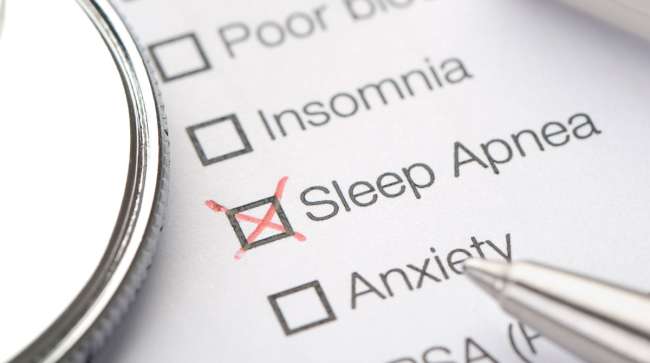Senior Reporter
Public Comments Point to Confusion Over Sleep Apnea Proposal

[Stay on top of transportation news: Get TTNews in your inbox.]
The long-simmering controversy over how medical examiners decide when they should send truck drivers at risk for obstructive sleep apnea to undergo costly lab sleep studies is heating up again.
In comments solicited by the Federal Motor Carrier Safety Administration on the agency’s proposed update of its medical examiners handbook, truckers and their trade groups continue to make it clear that sleep apnea diagnosis concerns remain, and that the handbook should make some changes to what they perceive as a murky situation.
The issue is a touchy one since drivers need to pass their physicals free of sleep apnea risk to get their medical certifications allowing them to remain in the driver’s seat.

Most commenters said they agree that truck drivers with sleep apnea, which heightens their risk for crashes, should be diagnosed and treated. However, most of the more than 70 commenters sampled on the proposal expressed concern with the way the agency offers best practices in assessing sleep apnea risk that don’t carry the weight of a regulatory mandate.
The rewriting and slimming down of the handbook has been seven years in the making after FMCSA pulled it off the internet in 2015, generally leaving thousands of examiners to fend for themselves in using best medical practices when they screen drivers at least every two years. The proposed revised handbook is 116 pages, compared to the prior 260-page version.
Criticisms of sleep apnea diagnosis methods were in some cases very harsh. “I agree there are some who might need apnea machines, but once again [you’re] pushing more drivers (older, more experienced) out the door again,” wrote truck driver William Caulfield.
“Every time I turn around they’re changing the rules. Stop messing with regulations. Leave truck drivers alone,” wrote trucker Daniel Hochleutner.
“There are simply too many instances where the medical examiners work for the same corporate medical behemoth as the sleep study doctor, which corporation also conveniently sells the device and supplies,” wrote trucker Pam B. “Even if they don’t actually work for the same company, often the alliances between these parties are far too cozy and mutually profitable to pass the ‘sniff test.’ ”

Host Seth Clevenger and ZF’s Julien Plenchette consider how today’s advanced driver-assist systems technologies can support drivers and make them feel better behind the wheel. Tune in above or by going to RoadSigns.ttnews.com.
But most of the comments sampled were more measured, including a posting by American Trucking Associations.
“ATA recognizes the continued interest in obstructive sleep apnea as a safety concern,” the trucking trade organization wrote in comments. “While [federal regulations] have specific criteria related to driver medical issues such as diabetes, cardiovascular disease, stroke and hypertension, these medical issues are typically known at the time of the exam. With regard to OSA, a medical examiner may suspect OSA, and therefore, require a driver submit to a sleep test before continuing with the certification process. While guidance may help in these situations, our experience is that it leads to more confusion regarding what is and what is not required by the medical examiner.
“While the steps taken by FMCSA’s Medical Advisory Board to address this are greatly appreciated, we fear that revisions contained in the draft handbook continue to represent guidance and not regulation that will ultimately lead to an uneven approach with regard to screening for OSA. Should FMCSA choose to prescribe OSA screening and treatment guidance or regulations, FMCSA must do so through the rulemaking process. This is not just the opinion of ATA but required by law. ATA feels the current draft allows for too much discretion and will further facilitate inconsistent commercial motor vehicle medical examinations.”
The Truckload Carriers Association offered similar comments.
“The development of any future regulation on establishing objective standards for sleep disorder screening, testing and treatment should be focused on conditions that pose a substantially elevated crash risk based on sound data and analysis, be cost-beneficial, and promote effective treatments that minimize the impact to motor carriers and drivers,” TCA wrote. “TCA maintains that any rulemaking efforts in this regard should only be done so with substantial, coordinated input from key industry stakeholders.”
“The handbook should acknowledge that examiners should not overrule personal medical physicians,” the Owner-Operator Independent Drivers Association wrote. “The handbook should stress the importance of examiners accepting the medical judgment of a driver’s personal physician. Too often, certified medical examiners ignore personal physicians' judgments and deny medical cards to drivers.”
Want more news? Listen to today's daily briefing above or go here for more info
OOIDA added, “There are far too many instances where truck drivers are required to undergo screenings based on sole risk indicators, such as age, body mass index or neck size, when other comorbidity factors must be considered.”
The Alliance of Sleep Apnea Partners emphasized that there is a need for FMCSA to issue clear guidance to the medical examiners based on the agency’s medical review board and the Motor Carrier Safety Advisory Committee’s 2016 joint recommendations.
“These recommendations are specific and provide clear guidance, and FMCSA should encourage the medical examiners to review these recommendations upfront prior to making any decisions on certifications,” the Alliance wrote.

